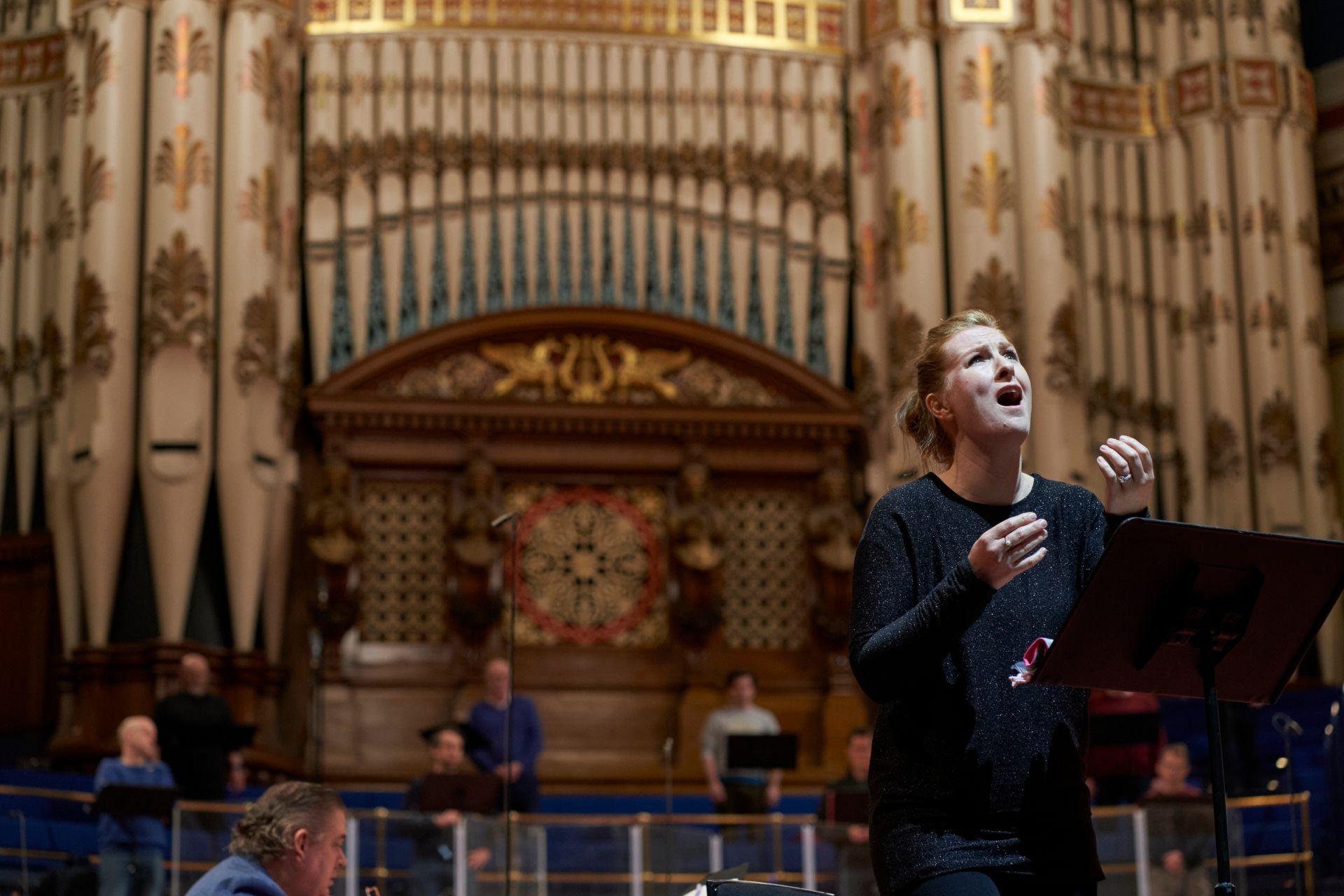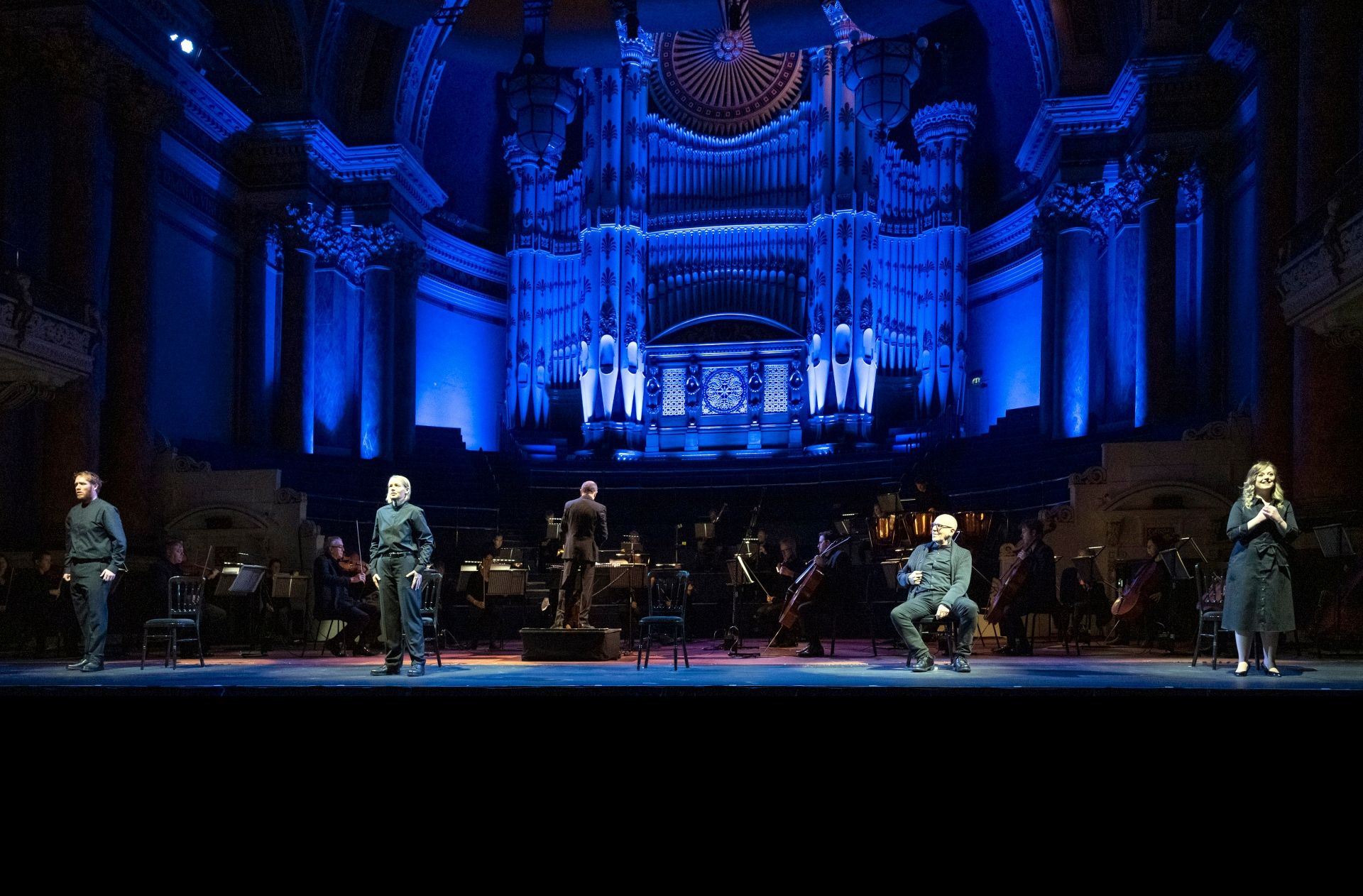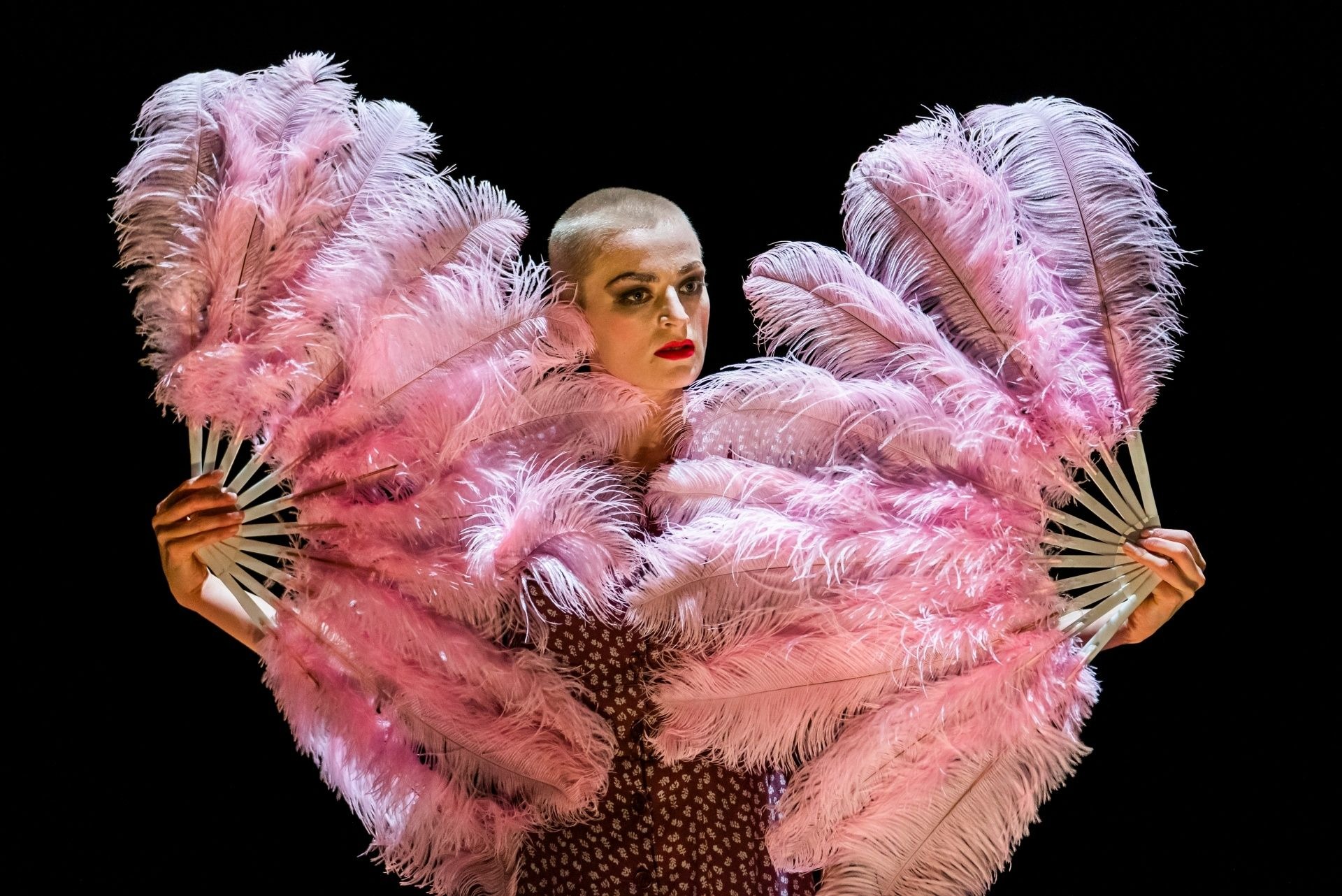An effective adaptation of Henry James’ mysterious novella to the stage, an excellent handling of Britten’s challenging opera – and a first live stream for Opera North.
Greetings from Verona, readers! I did not think that I’d be doing a piece for Leeds Living from here, but the stars seem to have aligned for it: just as I go away for a month, Opera North arranges their first ever live-streamed performance. This is, then, a review of the live-stream, and not of the experience in the theatre; I offer some thoughts on the differences between these later in this review.
The opera was streamed through a wonderful organisation of whom I have long been a fan, Opera Vision. The company streams operas from around the world in high quality, and leaves the recordings to be watched and listened to for six months. I’d urge readers to go look at their site (the link is at the bottom of this review) or YouTube and to enjoy the hours of amazing footage which they have. If you like the sound of this production from this review, you can go and watch it! Sometimes, modern technology seems to ruin everything, but on this occasion it is a great gift. (I should add that, although this pleasure is free, we owe it to Opera North to buy a ticket and see it in the theatre, too, if we can.)
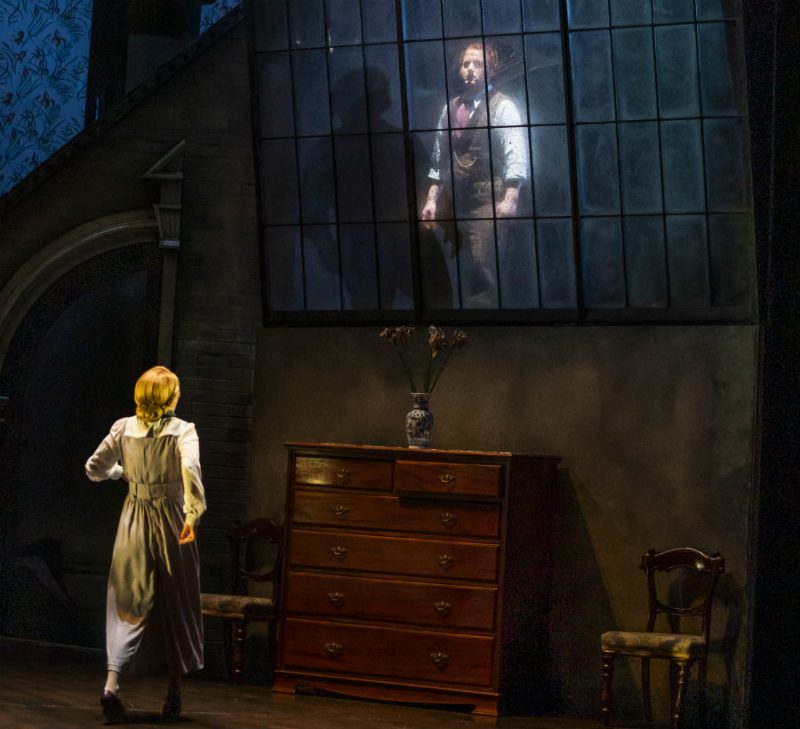 I was glad to see that Opera North were doing Britten’s opera The Turn of the Screw. I have read Henry James’ novella (on which the opera is based) several times—twice as a student, once as a teacher. It is a rich, ambiguous, mysterious story. I shall try to give away as little of it as possible in this review, in case people want to read it—which they should!
I was glad to see that Opera North were doing Britten’s opera The Turn of the Screw. I have read Henry James’ novella (on which the opera is based) several times—twice as a student, once as a teacher. It is a rich, ambiguous, mysterious story. I shall try to give away as little of it as possible in this review, in case people want to read it—which they should!
The curious thing about the novella is that it doesn’t give the reader all of the information needed in order to explain what’s happened in the story. It ingeniously uses ambiguous signals to support two incompatible yet independently viable readings of the events.
The issue for staging this sort of story, then, is how to keep this crucial ambiguity alive since, without it, we have only one, relatively prosaic, story. The genius of Henry James’ novella is that it is two stories at the same time as being only one.
One wonders then why Britten chose this tale, which, out of all those which could be translated to the theatre, is far from the most suitable. Perhaps it was the very challenge of maintaining this ambiguity which attracted him. One can tell from the astonishing soundworld of the opera that the composer took great delight in scoring eerie music which could mirror the atmosphere which characterises James’ novella.
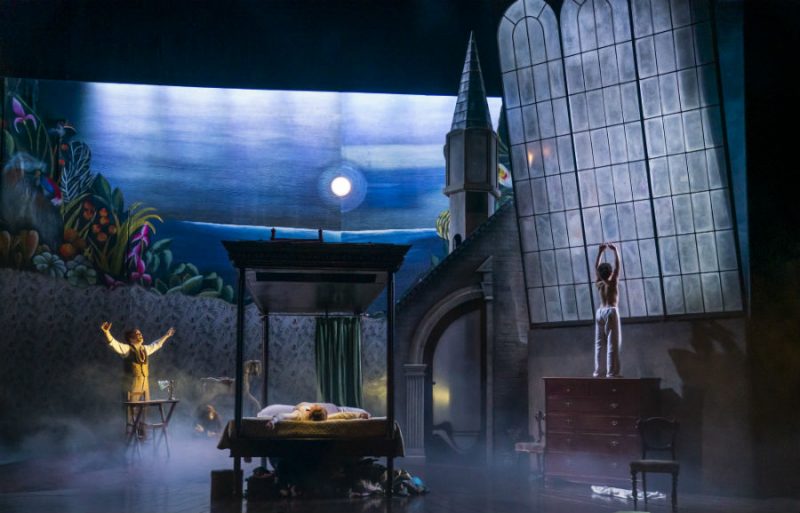 But it is a curiously static story, in both the novella and the opera. As in Hamlet, all the action is set in the stultifying atmosphere of a royal/aristocratic house and its surrounding grounds. There is little ‘plot development’, merely changes in the attitudes of one character towards another. This does precipitate, however, both in Hamlet and in Screw, some big events towards the end. The story seems to simmer for a long time, then it bubbles and boils.
But it is a curiously static story, in both the novella and the opera. As in Hamlet, all the action is set in the stultifying atmosphere of a royal/aristocratic house and its surrounding grounds. There is little ‘plot development’, merely changes in the attitudes of one character towards another. This does precipitate, however, both in Hamlet and in Screw, some big events towards the end. The story seems to simmer for a long time, then it bubbles and boils.
There is no doubt about the brilliant restraint of Britten’s scoring. The opera is a ‘chamber opera’ and is accordingly given a small orchestra. Audaciously, the instrumental overture is played only by the piano, not normally an instrument to be found in an orchestra pit—and yet the most obvious of instruments. The simplicity is disarming, and to be disarmed by simplicity is key to the creepy effect which The Turn of the Screw wishes to achieve.
After this, tenor Nicholas Watts, who plays the hugely important and mysterious character of Peter Quint later in the opera, comes out in the person of the Prologue. This device succinctly introduces us to the premises of the story. A nameless Governess (Sarah Tynan) is on her way to Bly, a lavish house which contains a servant, Mrs Grose (Heather Shipp), and two children whom the Governess is to educate and care for, Miles (Tim Gasiorek) and Flora (Jennifer Clark).
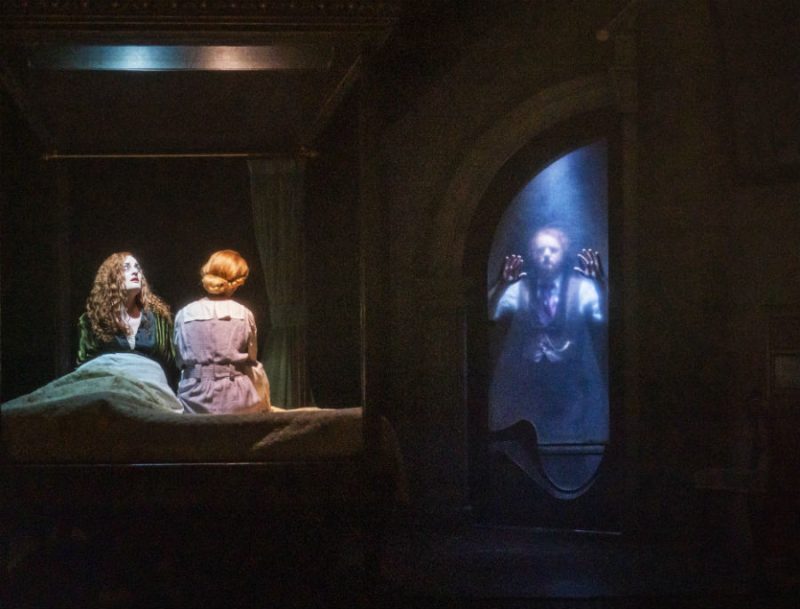 The Governess is in the employment of an unnamed, rakish gentleman, who is uncle to the orphaned children, and who never appears in the story, yet casts a large, looming shadow over it. The dark stage—it remains largely dark all evening—reveals a figure clad in black, back to the audience, hard to make out at first. The figure is shaking: this turns out to be the Governess riding to Bly. The ambiguity of this opening image nicely emblematises the ambiguity running throughout the production—the image even recurs at the start of the opera’s second half—and shows the thoughtfulness and creativity of Alessandro Talevi‘s direction, and the great use of lighting by Matthew Haskins.
The Governess is in the employment of an unnamed, rakish gentleman, who is uncle to the orphaned children, and who never appears in the story, yet casts a large, looming shadow over it. The dark stage—it remains largely dark all evening—reveals a figure clad in black, back to the audience, hard to make out at first. The figure is shaking: this turns out to be the Governess riding to Bly. The ambiguity of this opening image nicely emblematises the ambiguity running throughout the production—the image even recurs at the start of the opera’s second half—and shows the thoughtfulness and creativity of Alessandro Talevi‘s direction, and the great use of lighting by Matthew Haskins.
It was a shame that the sets and costumes (both by Madeleine Boyd) weren’t quite as brilliant. The costumes were ordinary, drab nineteenth-century fare, and the sets were alternately ordinary and slightly odd, as when the giant window of Bly from which the children repeatedly look throughout the opera seemed more like that of a greenhouse than of a lavish estate.
All the musicians did a fine job, including the singers. But Screw is burdened by a need for young singers. You can imagine how hard it is to find excellent young singers who can carry an entire opera! This is a problem with Britten, who loved children—some say a bit too much—and wrote music for them often. Tim Gasiorek’s Miles is perfectly cast. But Jennifer Clark’s Flora and Sarah Tynan’s Governess—whilst wonderfully sung and acted—look a shade too old for their parts. This is particularly bad with Flora, who needs to be very young, so that she can have a deep simplicity. This Flora is closer to my age, and about three times the height of a six-year-old girl!
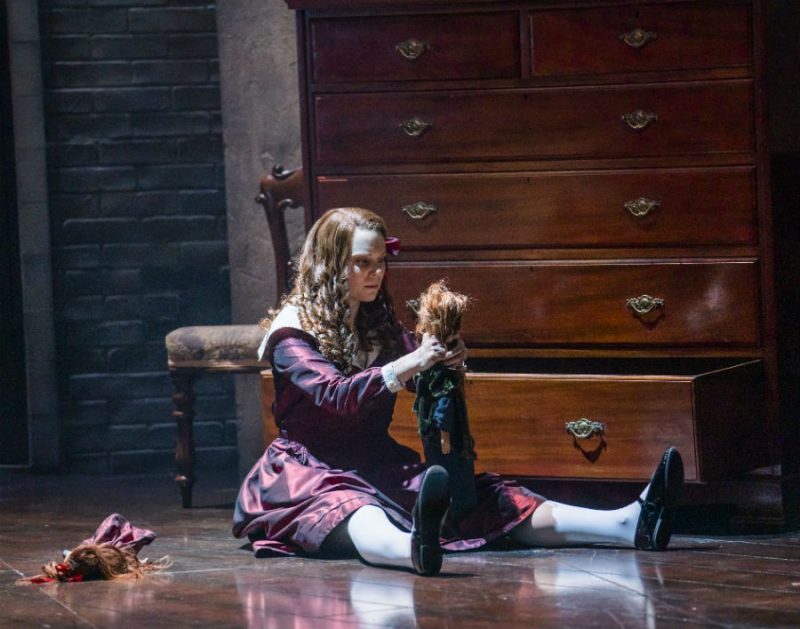 A few other things not to my taste were elements in Britten’s style (with which I have long struggled). This opera makes use of twelve-tone harmony, which I loathe. Luckily, it blends in Britten with some fine writing and some more traditional ways of using harmony, making the overall effect more bearable than in other composers, where it comes off as a show of intellect without any human warmth to it. But how good might this opera have been without this clever but annoying intrusion! Listening to Britten, one always has the sense of someone enormously intelligent, but also of someone who is the perfect student of music, the prize possession of ABRSM and RCM. But a normal person is annoyed by this swattiness and his love for coy phrases from late nineteenth-century English.
A few other things not to my taste were elements in Britten’s style (with which I have long struggled). This opera makes use of twelve-tone harmony, which I loathe. Luckily, it blends in Britten with some fine writing and some more traditional ways of using harmony, making the overall effect more bearable than in other composers, where it comes off as a show of intellect without any human warmth to it. But how good might this opera have been without this clever but annoying intrusion! Listening to Britten, one always has the sense of someone enormously intelligent, but also of someone who is the perfect student of music, the prize possession of ABRSM and RCM. But a normal person is annoyed by this swattiness and his love for coy phrases from late nineteenth-century English.
These last are everywhere in his music, but in this case, the blame is with his librettist, Myfanwy Piper. The libretto is more than competent—it is craftsmanlike—but it never matches the genius of James or Britten, and tends to weigh the opera down, adding uncomfortably to its sense of stasis. I think that a redacted version of James’ words would have been better than Piper’s additions of pleasant but extraneous rhyming couplets, not to mention the somewhat hard-to-get-through Latin lesson—and this is from a lover of Latin lessons!
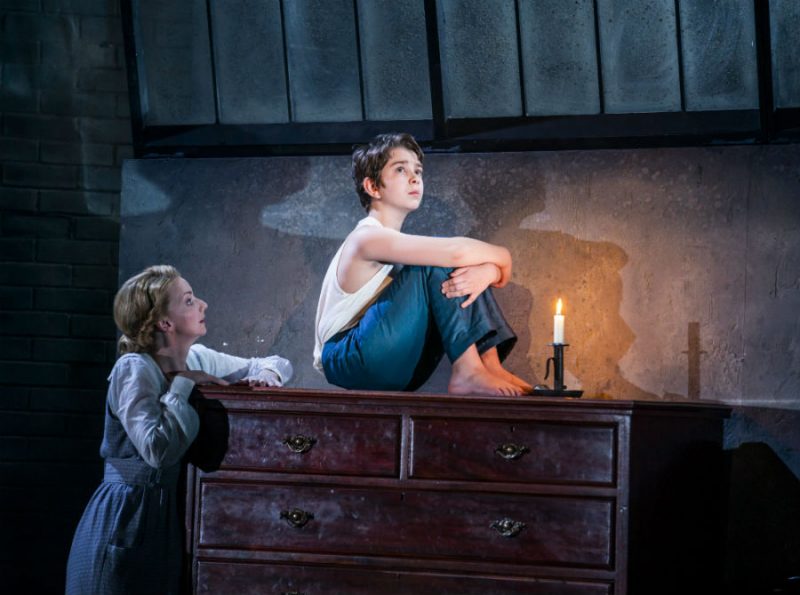 The opera feels like cleverness without warmth. Nevertheless, it is an enjoyable ride, the ending is both affecting and effective, and the whole thing made me want to pick up and read James’ novella for the fourth time.
The opera feels like cleverness without warmth. Nevertheless, it is an enjoyable ride, the ending is both affecting and effective, and the whole thing made me want to pick up and read James’ novella for the fourth time.
A few thoughts on live-streaming. It is great for a reviewer to be able to pause and take notes in a well-lit room rather than a dark theatre, where the writing often comes out as an illegible scrawl. It is superb to watch an opera with tea. One can also divide the stream up into separate sittings and digest its complexities more slowly. One is privy to unusual angles, such as gazing in the orchestra pit, or seeing a letter as it is bring written—an impossible view to the audience—and the nuances of facial expressions. And of course one can run it back if something amazing and/or confusing happens, or if the attention lags.
Yet there are undoubtedly things missing from the live-stream experience, which I will always be happy to go to the theatre to enjoy. I think that even an audiophile—which I am not and cannot afford to be—cannot quite get the wonderful sound of a live orchestra in a room filled with people onto their sound device. There is something special about both sound and atmosphere at the live, singular, beautifully transient theatrical event. It is often a great pleasure to watch something in a populated theatre with its sense of a shared—not infrequently profound—experience. And online, one misses out on programmes; regular readers of my reviews will know how much I miss an Opera North programme when I don’t get one!
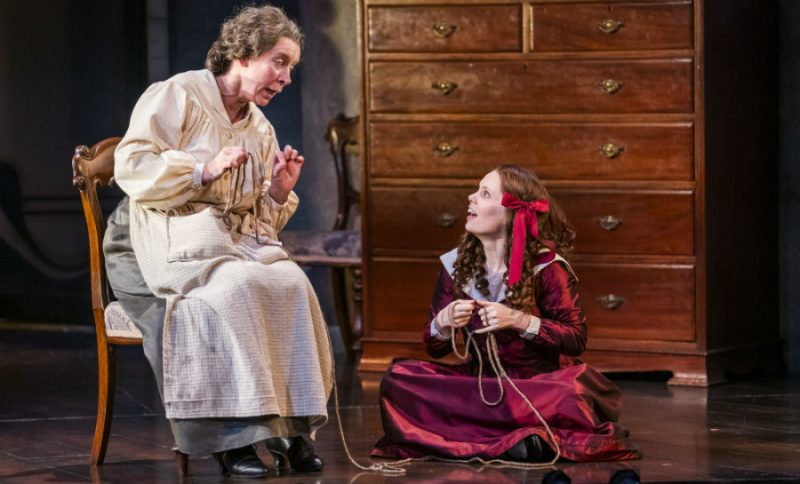 There is plenty to enjoy here, especially if you like Britten more than I do. Reward the ample hard work in this intelligent and imaginative production by seeing it in the theatre, and (if you like) enjoy reliving it on the live-stream, available for the next six months or so.
There is plenty to enjoy here, especially if you like Britten more than I do. Reward the ample hard work in this intelligent and imaginative production by seeing it in the theatre, and (if you like) enjoy reliving it on the live-stream, available for the next six months or so.
www.operanorth.co.uk
www.operavision.eu
All photographs provided by Opera North.

